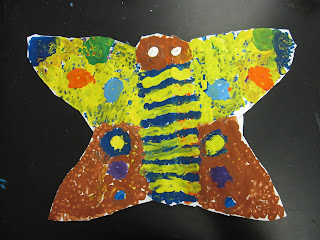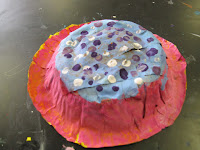2nd
Grade students used viewfinders to zoom in closely to a photograph of an
animal. They saw a demonstration of using photo-editing software to see how to
crop a photo. They learned that sometimes artists crop a photo or artwork to
show emphasis (or what the artist thinks is the most important part of the
artwork).
Students cropped a
photo of the animal of their choice and then drew what was in the viewfinder
very large. Then they wrote clues to help people guess what animal they zoomed
in on.
Los estudiantes de segundo grado usaron visores para
enfocar de cerca una fotografía de un animal. Ellos vieron una demostración del
uso de un programa para editar fotografías digitales y vieron como recortar una
foto. Aprendieron que algunas veces los artistas recortan una fotografía o una
obra de arte para hacer énfasis (o lo que el artista piense que es la parte más
importante de la obra de arte).
Los estudiantes recortaron una foto del animal que
escogieron y luego dibujaron lo que estaba en el visor, pero muy grande. Luego
escribieron pistas para ayudar a las personas a adivinar cual animal enfocaron
de cerca.




















































